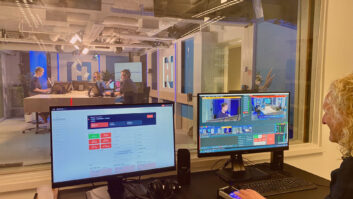There’s a world of opportunity out there for radio broadcasters; but for the opportunities to come to fruition, broadcasters must pay attention to two specific areas.
“Choice and control,” said RAIN News Publisher and Founder Kurt Hanson, who intermixed this advice during a 30-minute keynote address at the RAIN Summit here in Las Vegas, amongst snapshots of pizza, beer and pets.
It’s important to talk about things like Star Trek and coffeein the middle of a speech on radio, Hanson said, because “disruptive innovation and new business models can improve both business and your own personal success,” he said.
Choice and control are what consumers want, Hanson said. Take the power of the Keurig K-Cup coffee maker, which gives users specific options when it comes to things like coffee choice and brew time. “It’s a way to have increased choice and control of a consumer’s device.”
The same advice is true in the car.
“That is where [the industry] is headed: an interface where you give consumers more and more control in their audio listening choices,” he said, showcasing a photo of a connected car with an installed Apple CarPlay interface.
In his keynote address, Hanson offered a review of where audio consumption stands for AM/FM radio, on-demand music services, online radio and podcasting. Not surprisingly, the smartphone is sitting at the center of much of that consumption.
The numbers of radios per household is dropping, with one Infinite Dial study reporting that most 18- to 34-year-old radio listeners do not even have a physical radio in their house.
But when you look at consumption in terms of devices that can pick up radio, the story is quite different, Hanson said.
“Smartphones are a truly society- and life-changing thing that has happened in our lifetime,” he said, ticking off the growing list of features that a single smartphone can offer, be it camera, telephone or video camera. For tens of millions of people, the smartphone has also become their primary radio.
“If you count these, the number of devices that can pick up radio stations or online radio is going way up,” he said.
On-demand music services are also growing, with listeners spending about 80% of their time with a radio-like product and 20% with their own music collection, which includes CDs, online subscriptions and MP3 players.
Online radio is also an area of strength, led by Pandora, iHeart, Spotify and then individual broadcasters like CBS.
When it comes to upcoming trends, Hanson pointed to potential growth in connected home stereos, in-dash infotainment systems, Bluetooth headphones and voice control.
“When you’ve got connected stereos in your house and voice control in every room, it’s going to change our lifestyle experience,” he said. “And you want to have your brand on those devices if you can.”
And the industry must learn to embrace new, disruptive technologies that may significantly affect existing business plans. Take for example the increase in Bluetooth-enabled headphones. That’s a potential problem for NextRadio, Hanson said.
“The problem is that NextRadio requires a headphone cord to work,” Hanson said. “What happens if Bluetooth headphones take over?” A member of the audience chimed in to say that Nielsen PPM devices also require a cord to work successfully.
Hanson also noted that in-dash infotainment offers a major opportunity for the radio industry as more automobile manufacturers introduce cars with integrated Apple Car Play and Google Android Auto connectivity.
“My guess will be that this will really crank the trend up faster, and it’s something you want to be part of,” he told the crowd.
What actions should broadcasters take now? Give people those two elements, he said. “New listeners are coming, but the key is choice and control.”










